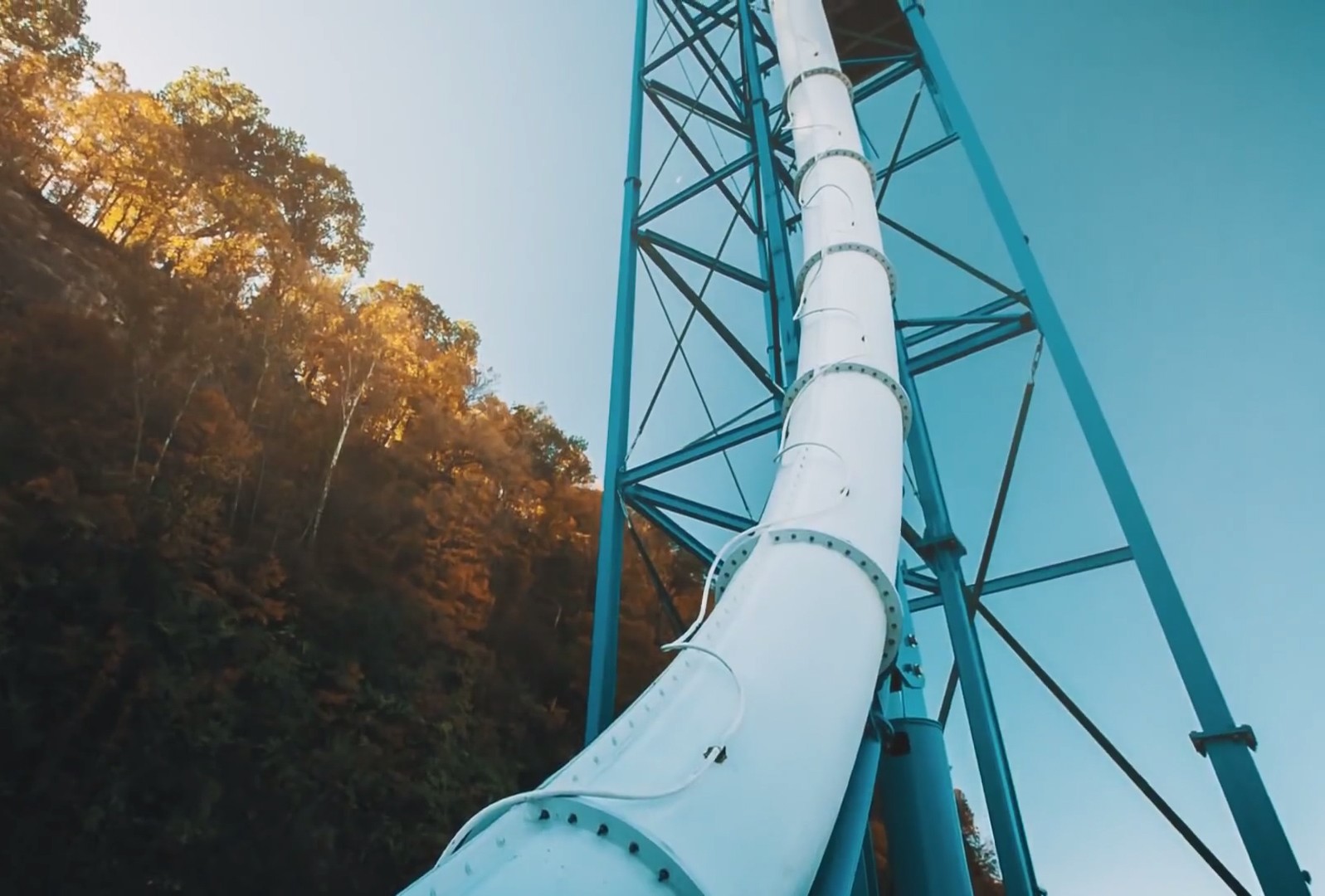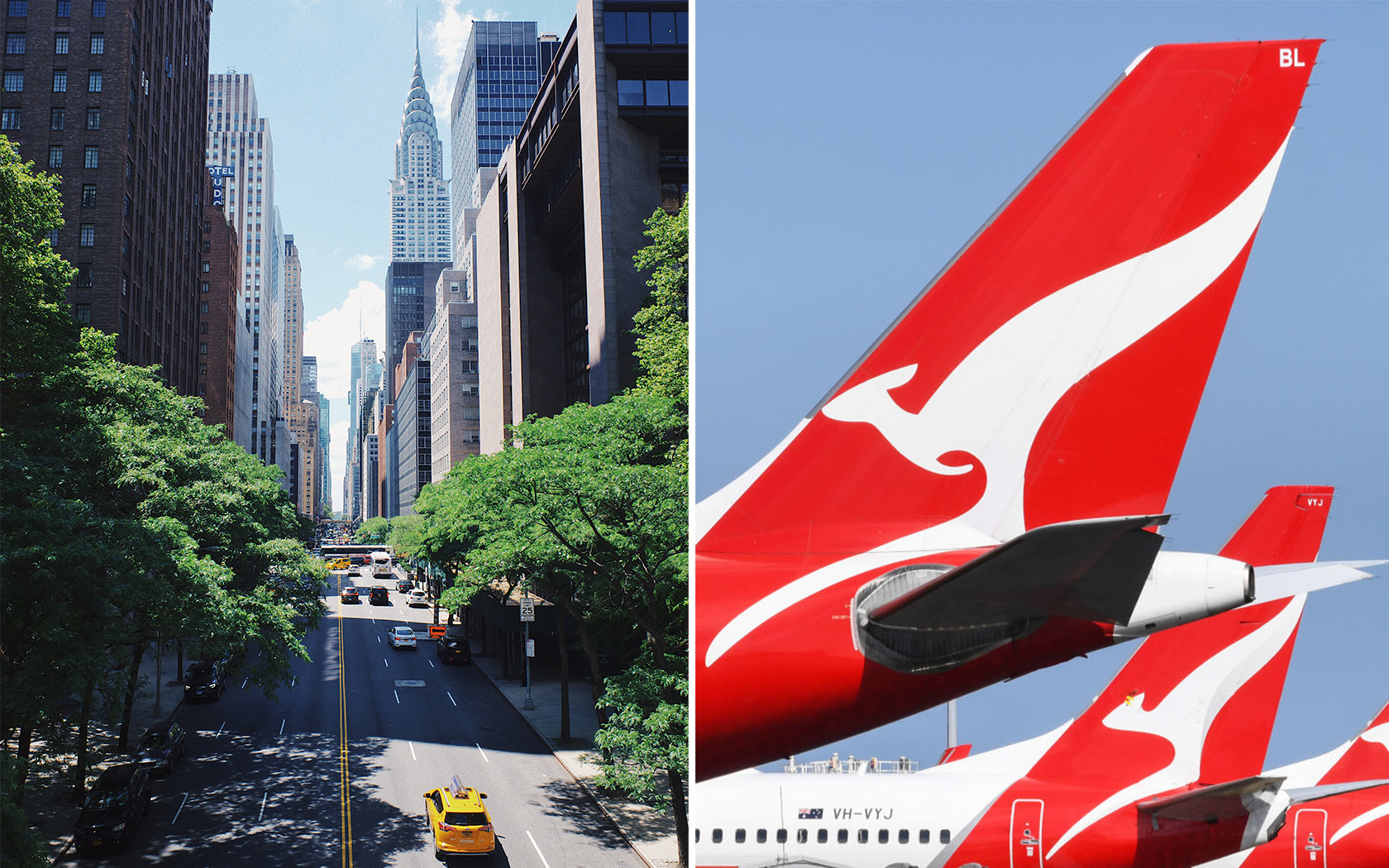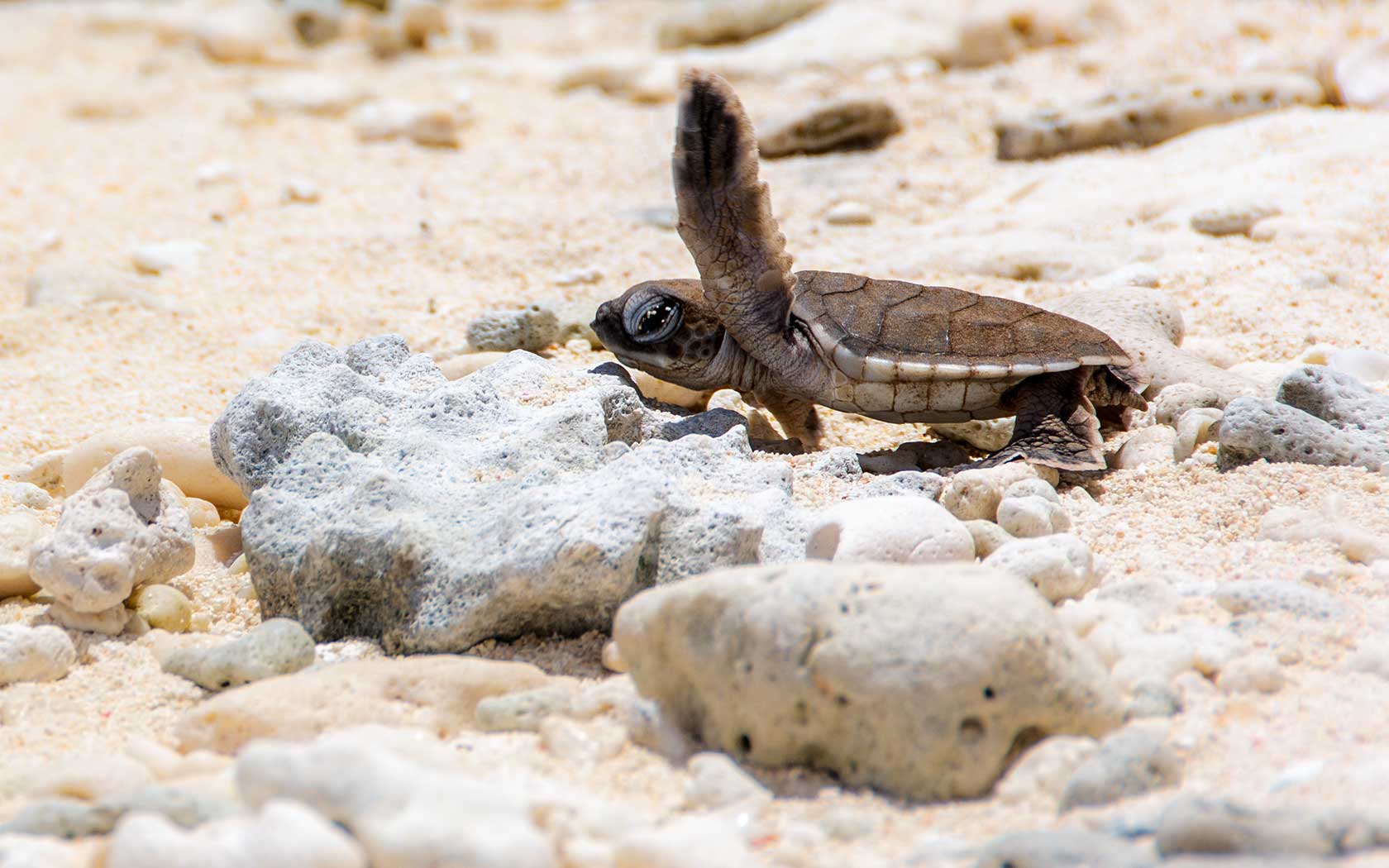We Spent A Day Hanging Out With Turtles In Melbourne
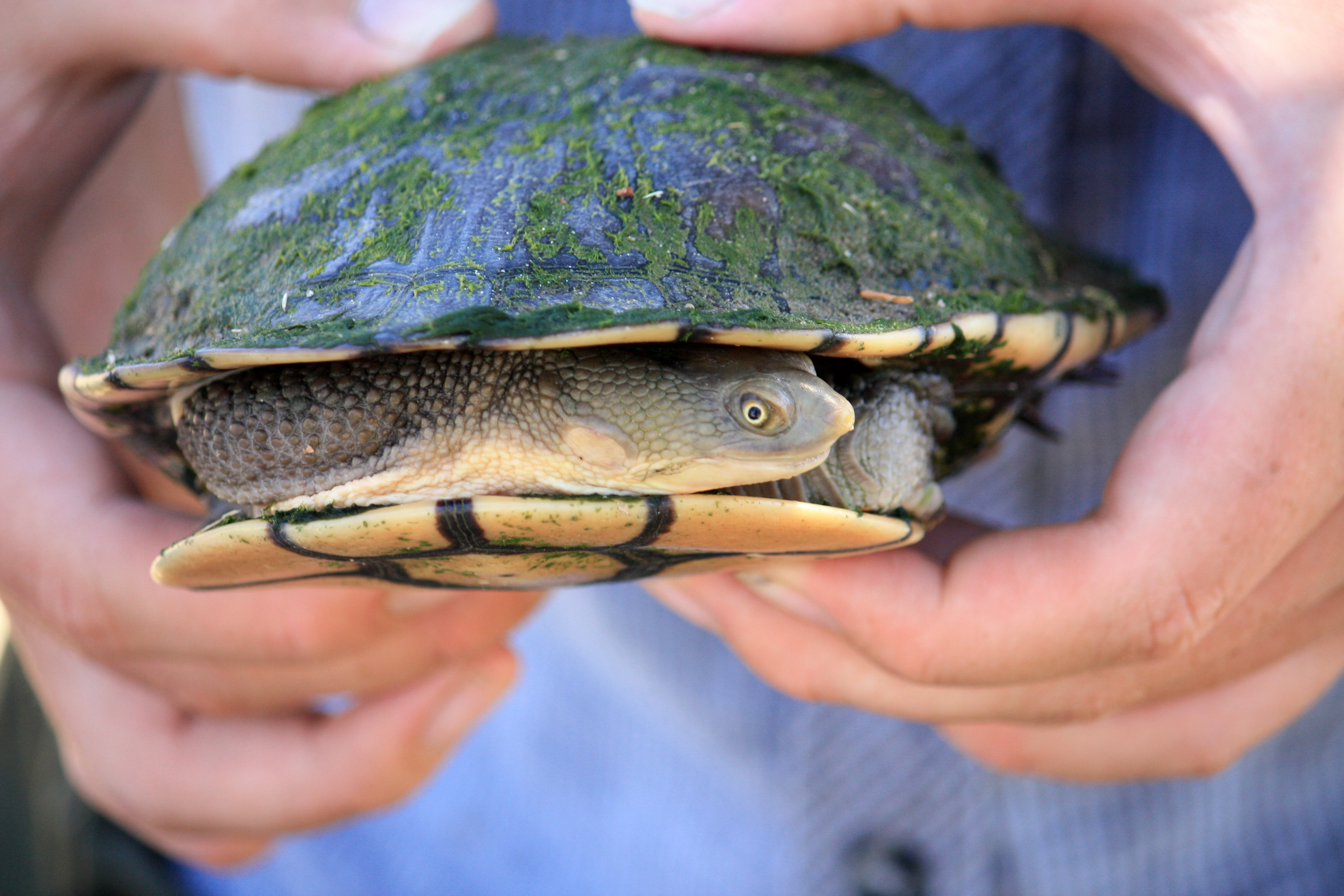
Jess O'Callaghan is finishing up her media degree and producing…
There is a turtle in a pond in Kilsyth, Victoria named J. He’s not an adult yet – probably about five or six-years-old, and his shell is covered in a green moss. He blinks slowly and looks like he’s smiling all the time, although I know that’s probably just his face and I shouldn’t be trying to find human qualities in this awesome turtle. I’m holding him in a car park while a geologist unpacks the tools to measure him. He’s one of many common long neck turtles living in urban waterways and suburban parks in Melbourne.
It was news to me that Melbourne even had a turtle population of any size. I’d seen one at the Royal Botanic Gardens once, on the way to the outdoor cinema – a long neck turtle shot out in front of me across the path and propelled itself into a pond, disappearing. But in five years that’s the only one I’d glimpsed. This project, ‘Turtles on the Move’ being conducted by the Australian Research Centre for Urban Ecology at the Royal Botanic Gardens along with Earthwatch, is mapping the population structure of Melbourne’s turtles over a number of years. This will help them to suggest the effects Melbourne’s increasing human population might be having on turtle populations in urbanised areas.
The Briefing
My friend Katie and I arrive at the University of Melbourne when it’s still dark. Our backpacks are stuffed full of everything on the Earthwatch checklist – a change of pants and socks, a sunhat, sunscreen and, hand sanitiser. In the office, we sit around a tall table and wake up with paper cups of instant coffee, full of sugar. Dr Andrew Hamer, the herpetologist leading the study, gives us a briefing once everyone has arrived. He explains that we’re not just counting turtles but mapping a population structure. A study like this tells you things other than the number of turtles in Melbourne. We think of animals simply, but even just hearing about turtles in a Powerpoint made for sleepy non-biologists, there were nods to the more interesting parts of conservation.

For instance, some bodies of water which used to be wetlands have been changed by humans to suit our parks. Where they used to become lakes every winter and marshy wetlands in the summer, they now sit the same all year around. It’s hard to tell what effect this might have on turtles and their food sources. Less turtles in an urban waterway doesn’t automatically lead to the conclusion that the population is dying – it might mean conditions have caused the turtles to leave for a neighbouring swamp or lake.
We emerge onto Royal Parade, and the sun is up now. Katie and I jump in a four-wheel drive with Research Assistant Lee Harrison, and an Earthwatch volunteer named Blair. We’re heading to Kilsyth and Lilydale, while Andrew’s group heads further south. “He’s been grumpy because he hadn’t caught any turtles ‘til yesterday,” Lee jokes, as we pack our lunches into an esky in the boot of the car. Blair, Katie and I try to act cool. Later in the car someone asks, outright this time – “Is there a chance we might not catch any turtles?”
Lee glances into the backseat while we’re stopped at a traffic light. “Whenever we have a journalist along – that’s when we don’t get any turtles,” she deadpans. Now it’s my fault if we fail at turtle catching. No turtles isn’t such an unlikely outcome – it’s nearing the end of counting season anyway. The number of turtles caught in March is significantly fewer than in December or January.
Laying the Traps
The first pond is in a park in Kilsyth, to the East of Melbourne. It’s shallow and reedy, with a little wooden bridge over it. We compare shoes sizes, and pull waders on in the car park. They’re kind of heavy gumboots with a waterproof onesie attached. Then we learn how to bait up the nets – they’re long funnels of black netting, with different sized hoops along the way so that a turtle swimming in will find it difficult to get back out the way they came. We tie little bags of brisket to the third hoop, to give them a reason to dive in.
Lee has stakes in hand as she wades out into the shallows, using them to feel in front of her for the best path to walk through the uneven mud. Blair follows behind with a net, confident on her feet from practice fly fishing. Katie and I are too slow – we stick in the mud and almost topple forward the first step we take into the water.
Once I find my feet, I help lay the next net. Lee shows me how to stretch it alongside a patch of reeds, so that turtles aiming for the banks and the food that clings onto the plants get directed into the net strung up and directed into our net funnel towards the brisket bag.
We jump back in the car; waders still on, and do the same thing at lake number two, in nearby Lilydale. This one is bigger and deeper than lake number one, and Blair and I head out and try to toss a cathedral net into the water it like a giant discus. The top rings are rimmed with floats so it will fall down vertically. So there are four nets in this lake –more chance of turtles.
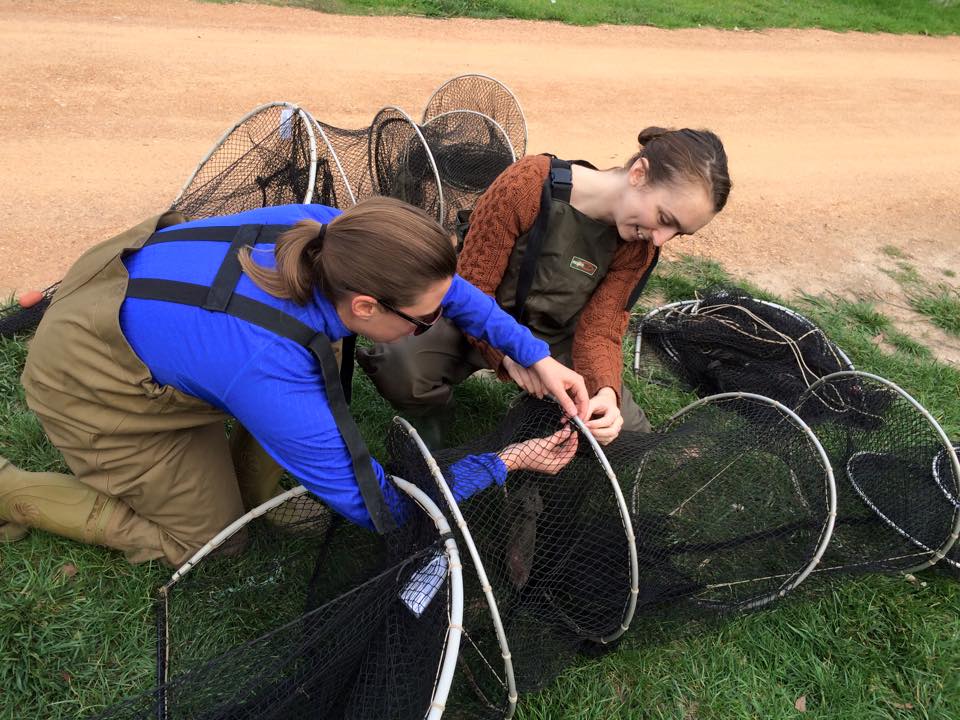
Now it’s time to learn about what the turtles are eating. To be honest, I thought this would be pretty boring, but the bug part of the day was really fun and addictive. We learnt how to dip net, grazing them against the edge of reeds to try and catch bundles of turtle food. Sometimes we’d dip the net in for 30 seconds, vigorously, and come up with fistfuls of mud. Most of the time we’d have a knot of lifeless-looking moss in the bottom of the net, and Lee would then help us find all the food in it.
Once the moss is teased out it’s was actually full of wriggling stuff – backswimmers, bloodworms, shrimp, baby clams. We do the same back at Kilsyth, but to be honest it was a bit sad after the world of tiny things in the black moss of Lilydale. In our briefing that morning we’d learnt all about mosquito fish – tiny fish who were introduced to Australia in the ‘20s because it was thought they fed off mosquito larvae and would control the population. It turned out they ate all sorts of native insects, larvae and invertebrates, stealing food from frogs, fish and turtles. Now, scoops of our dip-netting were revealing nothing but the wriggly jerks. They had likely eaten a lot of the other invertebrate in the lake.
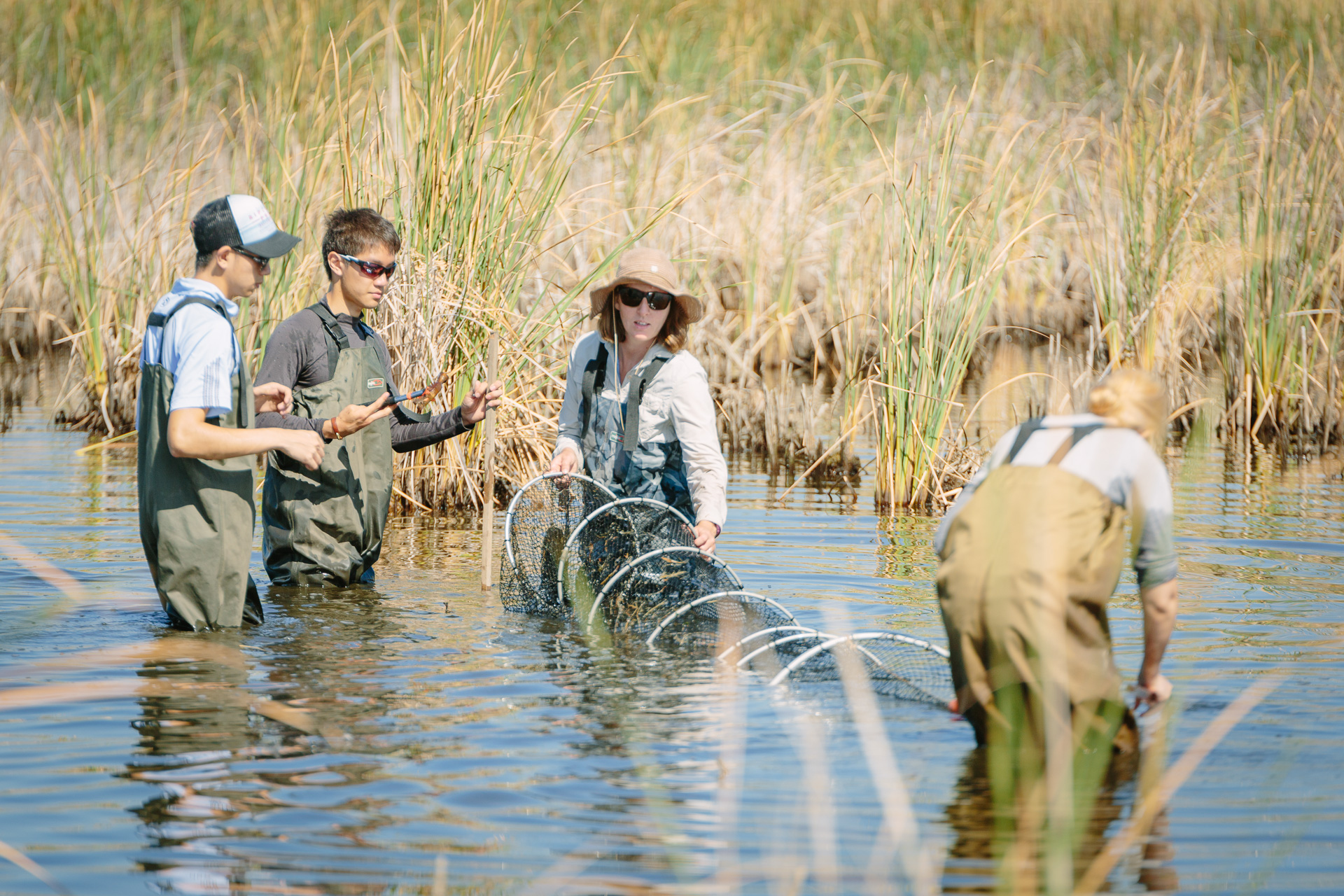
Turtle Time
The afternoon is the exciting bit, where we check the traps. “If we caught all the turtles in the morning no one would care about what they eat,” Lee jokes. As much as I warmed to the shrimp and the backswimmers, I can’t help but agree. As we pull the first net in, my heart is hammering. There’s a turtle in the third loop, feet twisting about like propellers.
This is J, the turtle I mentioned before. I carry him up to the car, and Katie, Blair and I press our faces up near his, grinning, while Lee unpacks the tub in the boot full of things to analyse the turtles. We learn how to measure the carapace, which suggests the age of the turtle, then we lay him on the scales and weigh him. Lee tells us that the younger they age the more energetic they seem to be. This guy is flapping all over the place. “Here you go,” she passes him back to me, “If he swipes at you don’t scream and drop him. It’s his right to attack you right now.”
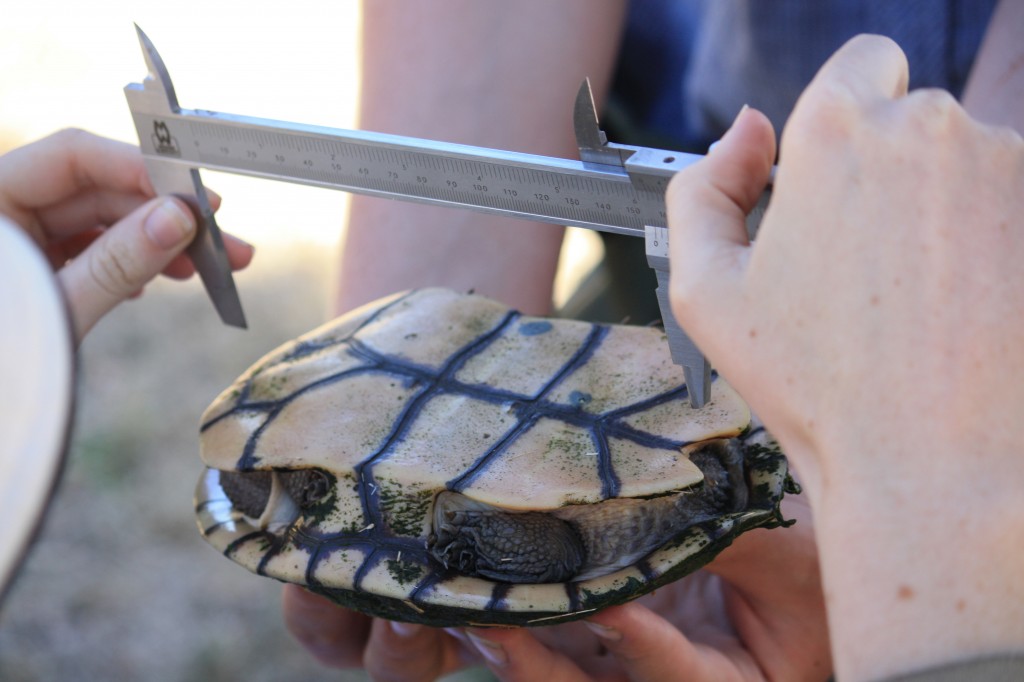
When we’re done taking J’s details, we need to mark his shell – this is how the team knows if they are catching the same turtles each time they visit a lake, and how many they are catching year after year. Each has a unique code notched into the edge of their shell, corresponding to a letter of the alphabet. This one got my initials. Then we took him back down to the lake and watched him paddle out into the shallows, tossing the brisket in after him.
The other two nets don’t have any turtles. We pile into the car, waders soggy now, elated by the turtle find and the broken curse. We find one more turtle in Lilydale. We name him HK. He is a grumpier turtle – older and less curious. I carry him back to where Lee is drying out our nets, and he claws and gropes at my fingers, wanting to escape. We catalogue and notch him sitting on the grass, and then let him back in near another net in the reeds.
All the nets brought in, we take off our waders. Mine has sprung a leak in the right leg, so one of my feet is toasty and dry and the other is wrinkly and damp. We turn everything inside out and spread out on the grass next to the nets in the afternoon sun. It’s the last day of fieldwork for the summer, so we’re waiting ‘til everything’s dry before we pile it back into the car. Katie and Blair fall asleep, I eat a muesli bar, and stare out at the lake. The turtles are free again, hopefully eating some brisket.
I saw a turtle. Two, even. I wasn’t cursed, and I didn’t see or feel an eel. I was fascinated by bugs and my waders filled with water and I didn’t even care. I felt tired and content. We drive back into the city, smelling like swamp, and I can’t get the smile off my face.
(Lead image: Earthwatch/Supplied)
The writer was a guest of Earthwatch’s “Turtles on the Move” expedition. You can use your Qantas points for a range of sustainable activities. Learn more here.
Jess O'Callaghan is finishing up her media degree and producing the Meanjin podcast. She writes for Right Now, Something You Said and Farrago.

